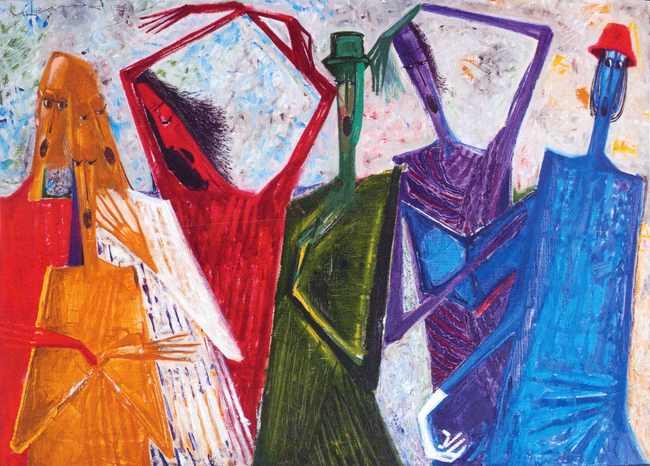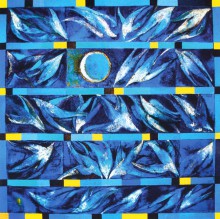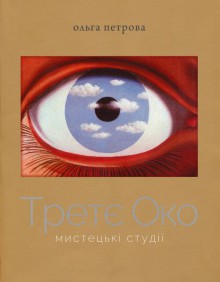I must say at once that the title of the book The Third Eye is eye to eye with its content (sorry for the unintentional pun). Firstly, Olha Petrova is a graphic artist and painter whose work is known, appreciated, and collected both in Ukraine and abroad. And not only in Europe, but also in faraway Japan. Secondly, she holds Cand. of Sc. in Art History and Ph.D. degrees, reflecting her ability to thoroughly and clearly sort through certain currents and developments in art in general, and Ukrainian art in particular, to give a professional assessment of an artist’s personality in society. Sometimes, this assessment is tough and impartial. And finally, the third reason is that Petrova was a direct participant of many events that influenced the work of artists she discusses in the book, and she is friends with the people whose civic position significantly influenced the intelligentsia’s changing fate over the years.
I confess I was afraid to open the book, since its subtitle “Art Studies: A Monographic Collection of Articles” looked intimidating. Besides, it was published with the assistance of the Institute of Contemporary Arts of the National Academy of Arts of Ukraine. To me, a layman in art criticism, it seemed that (may the author forgive me) the text would be full of specialized terms, understandable and interesting only to a narrow circle. However, curiosity had the better of me...
The Third Eye is not a monograph in the classic sense of the word. Petrova creates a living mosaic, whose characters are rebels of the 1960s generation (Ivan Hryhoriev, Viktor Ryzhykh, Ada Rybachuk, Volodymyr Melnychenko), dissenters who did not accept Soviet conformism and took refuge in “internal exile,” young talented artists of the 1970s generation (Volodymyr Budnykov, Zoia Lerman, Yurii Lutskevych, Valentyn Reunov), masters of the Ukrainian Renaissance (the term was coined by Russian experts in the 1980s) Tiberii Silvashi, Serhii Heta, Serhii Bazyliev, Serhii Odainyk, and the initiators of Antin Mukharsky-led anti-boorism movement who were fashionable and popular at the end of the past century, after the collapse of the “indomitable” Soviet Union. The author refuses to offer unambiguous support to some subjects of her study, does not accept projects created by some of them at all, but her criticism is never aggressive, it is rather well-founded and backed by literary, historical, and political allusions.

M. SHYMCHUK, FROM THE JAZZ SERIES. 2015
Petrova does not adhere to a rigid genre, stylistic or chronological form in her texts. She does not seek to be a detached observer. Passionate, straightforward, and sometimes even caustic in her personal life, she does not hide the personal sympathy for the characters she selected for the monograph. Theoretical articles are interspersed with vivid essays on the works of artists who are close in spirit to the author – Sergei Parajanov, Danylo Lider, and Adalbert Erdeli.
Being friends with many of the characters of the book, including Sashko Zhyvotkov, Anna Hidora, Valerii Shkarupa, Serhii Savchenko, Mykhailo Shchyhol, Serhii Hai, Vladyslav Shereshevsky, Katia Korniichuk, Oleksii Malykh, and Oleksandr Pavlov, I have not only learned a lot of new things about them, but also understood for myself why precisely these artists have not been lost in the crowd in the time of change, what is feeding their natural talent and fascinating viewers of their works.
Petrova quoted Rainer Maria Rilke’s “What an expanse has been fit here! / So the whole world finds a repository for it...” to summarize the fascinating story she told of her trip to creativity’s hidden labyrinths. All other comments have thus been made redundant.
P.S. Petrova’s monograph The Third Eye was published thanks largely to sponsorship by Stella Beniaminova (Stedley Art Foundation), a real connoisseur and collector of Ukrainian art. She never boasts of her participation in events of this kind, and therefore I would like to express sincere gratitude to her for the opportunity to read this book.








